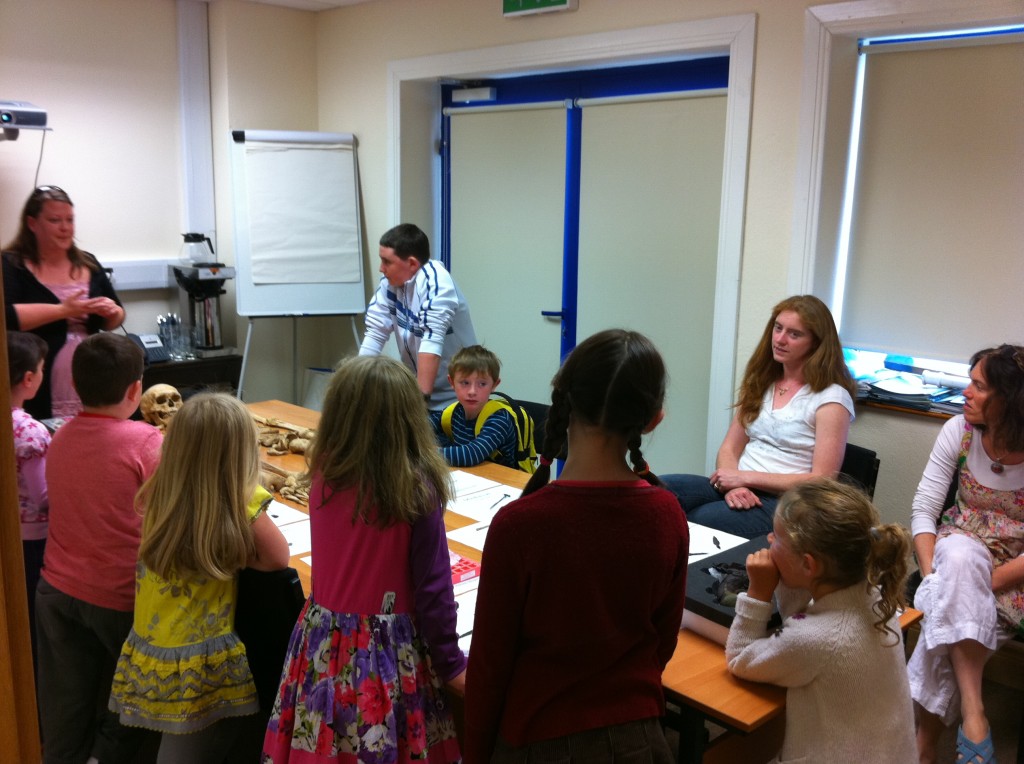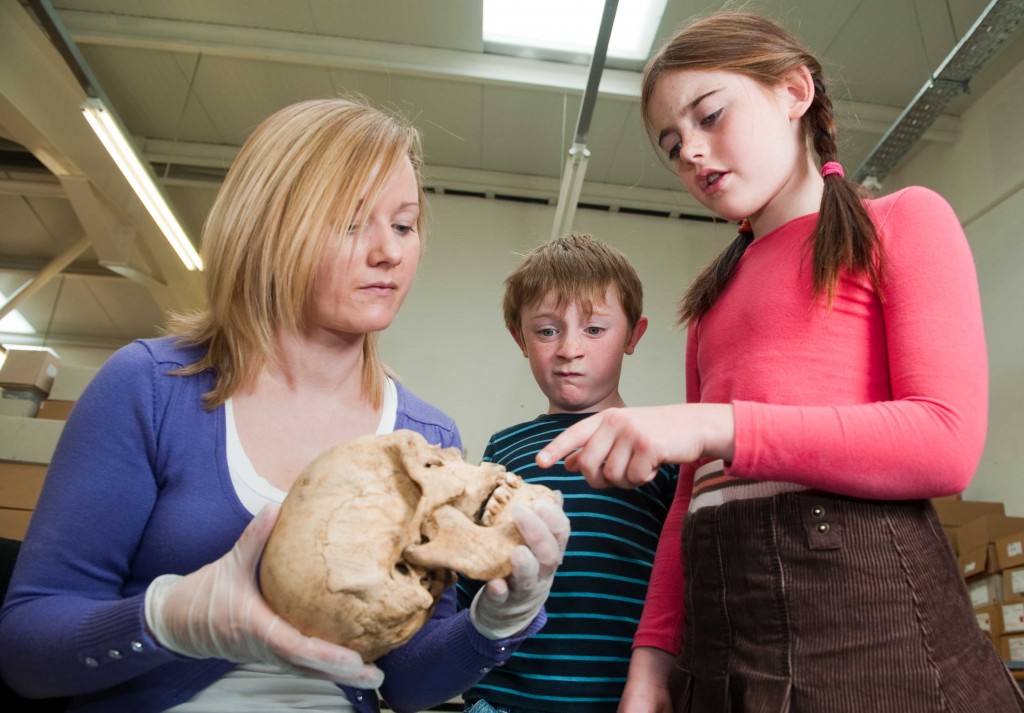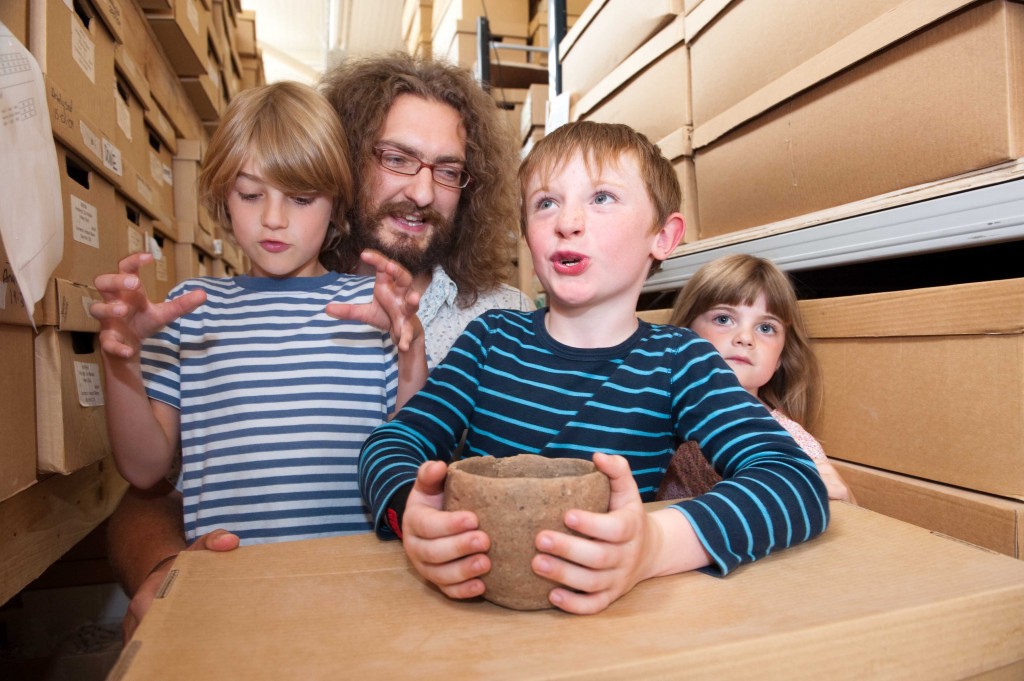Most of us are familiar with that all too often used cliché ‘thinking outside the box’. Well, in Rubicon’s pursuit of knowledge about the past let it not be said that we left any stone unturned or any avenue unexplored. To make sure of this, we decided to draw on that largely untapped and definitely ‘unrestrained’ source of wisdom, to be found only in one place: between the ears of children and young adults.

We at Rubicon are dedicated to outreach and dissemination, regularly entertaining school groups at our excavations, with the intent of inspiring Ireland’s next generation of archaeologists to pick up a trowel and get stuck in. We tend to find at such events that the kids bring a freshness of interpretation and a willingness to explore abstract concepts that can put many of their elders to shame. With this in mind, and in support of Ireland’s Heritage Week we invited a mixed-age group of youths to the office to see what gems of insight might be unleashed. We were not disappointed!

Our twelve Young Visiters were given a thorough briefing by Carmelita Troy, Osteologist and Åsa Carlsson, Post-Excavation Manager on the current theories being explored by Rubicon’s archaeologists on a variety of objects and artefacts, ranging from the Mesolithic period up to medieval Ireland. The material on show ranged from domestic tools and wares to weapons, food remains and a human skeleton. It is a general concern that children might be ‘spooked’ by being brought face-to-skull with the mortal remains of another person, but in our experience this is rarely the case. They tend to view such experiences with an enthusiastic and inquisitive fascination, far removed from squeam or squirm. In keeping with the respectful treatment of human remains in a post-excavation environment, our hardest task was preventing our visitors from over-handling the relics and persuading them to ask questions one at a time.

Far from wishing to make too light of the value of bringing children to archaeology and hearing their thoughts on it, it is genuinely interesting to share information with them and hear their thoughts on it. Their imagination grasps unexpected aspects of a story and we soon find ourselves very far down a road less travelled! If we can instill successive generations with an interest in the past and their ancestors – in exploring and understanding what went before – we go some way towards achieving what is archaeology’s principal role. It is too much to expect that children will automatically reach an age where these things become important to them, if we don’t make an effort to express their value in a meaningful way now.

In any event I digress; lets get back to ‘thinking outside the box’. Unfortunately many of the ideas and concepts proposed by our visitors were too far beyond the pale for universal consumption, but a selection of the less gruesome offerings are presented here for you to meditate on at your leisure. The medieval skeleton was a source of some of the more interesting musings. Painstaking analysis had established that the remains were those of a male who had almost certainly died of natural causes. We were quickly informed that we must have been in error with this interpretation, as there was a strong consensus that he had been murdered; were we sure he had not been trampled to death by a dinosaur? perhaps he had got on the wrong side of the Giant Irish Deer? (whose antlers were also on show), or been shot by a nineteenth century pistol? (an example of which was also conveniently located nearby, increasing its chances of having been the murder weapon).

A Bronze Age food vessel also sparked considerable debate- it was variously postulated that it may have been used to collect the blood from the mortal wounds of its owners enemies, served as a bowl for savoury porridge and vegetables ‘like the Romans had’ or in a common theme, could have functioned as a weapon if you hit someone ‘very hard’ with it. Following the success of our first Cross-Generation Think-Tank, we are considering making a regular feature of ‘reinterpreted’ archaeological remains by a panel of junior enthusiasts. If this is something you would be interested in reading – from a purely theoretical angle, presented to counterpoint the current accepted archaeological theory – please let us know!
Photographs from the Heritage Week visit have appeared in the Irish Independent, The Examiner and the Cork Independent, along with stories highlighting the importance of dissemination of archaeological news.
Well done on the great blog and great post – keep up the good work!
Greg
Thanks Greg! We’re really delighted with the positive reception the blog has been receiving and we are having a lot of fun with it ourselves. We’re working on a couple of submissions for this week just now – watch this space!
Just to echo that sentiment – really enjoying the blog and appreciate the highly specialised and effective work that you’re doing.
Thanks Patrick, that is great to hear! We’re enjoying sharing our work and it’s wonderful to get feedback!